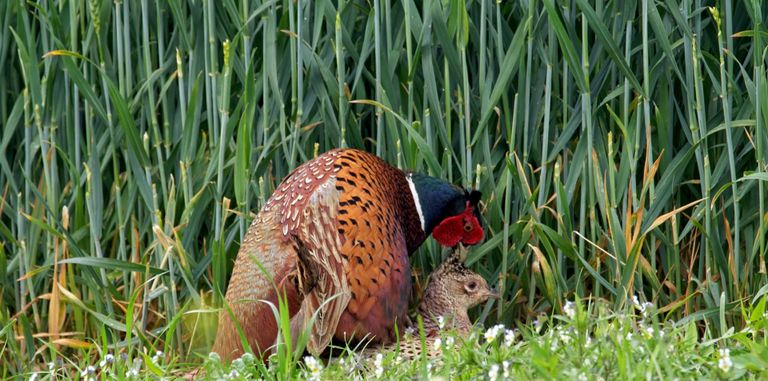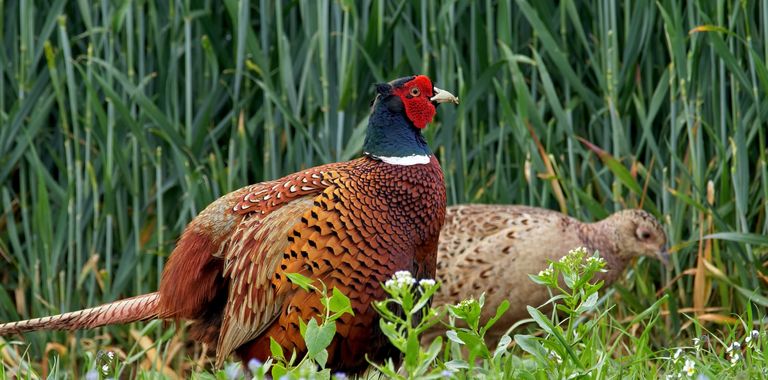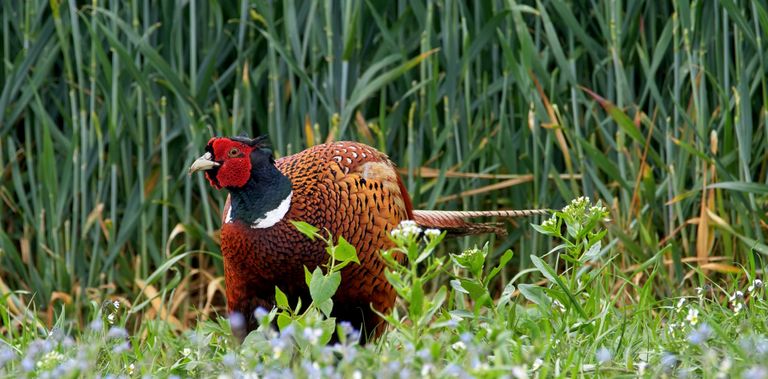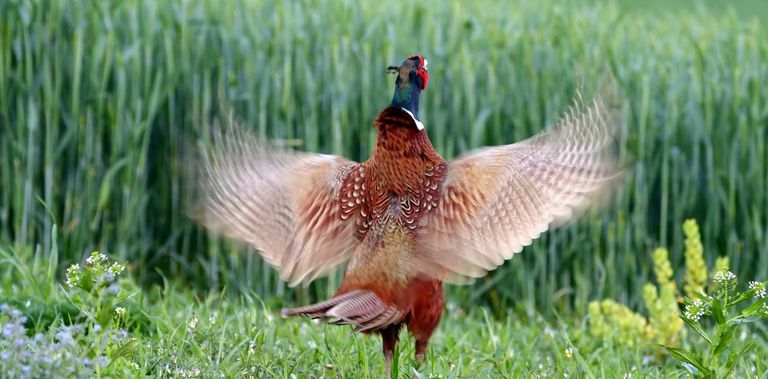
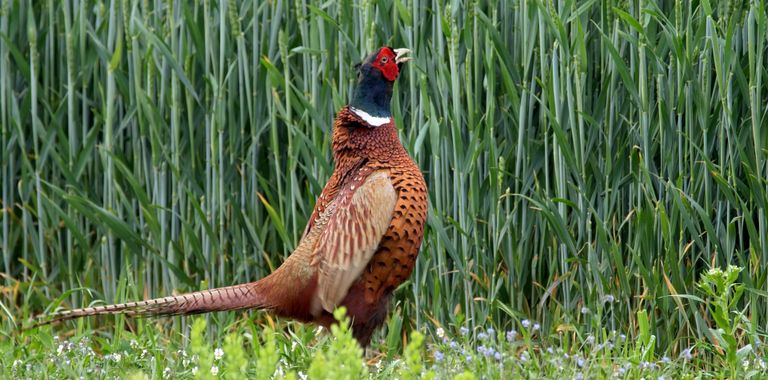
This beautifully colored bird, similar in size to a domestic hen, is found practically all over Poland. It is a game bird and a breeding one at the same time. It is not an endemic species. Pheasants come from Asia, and were brought to Poland and Europe in the 16th century, and have inseparably inscribed in our landscape.
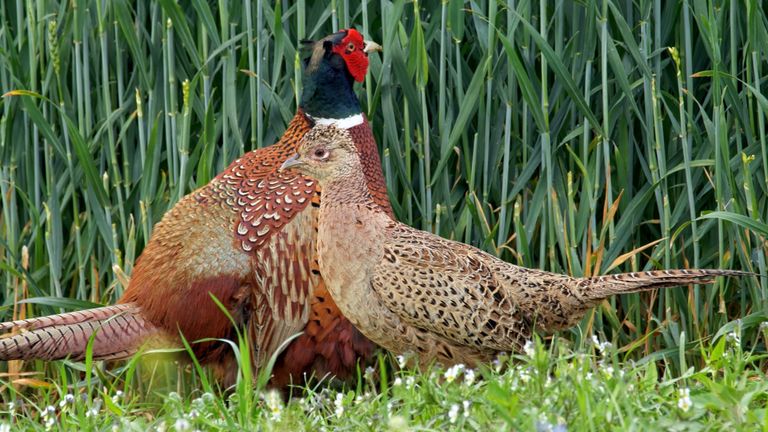

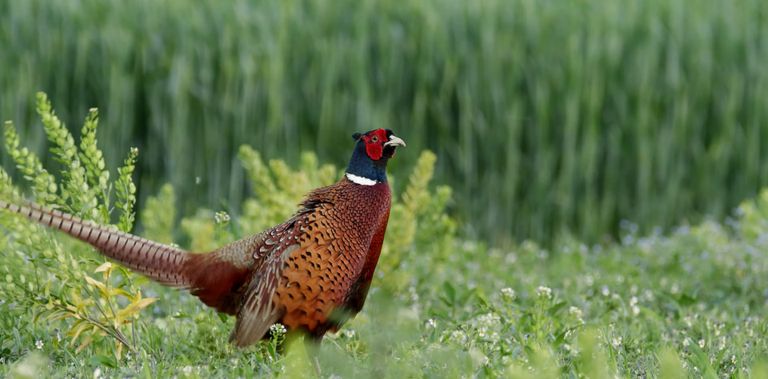
The pheasant has a very distinct sexual dimorphism, i.e. the female is very different from the male. A beautifully and colorfully feathered male pheasant dominates the gray female. The male has a shiny green head, a characteristic white collar around his neck, and the entire coloration is brown-rusty.
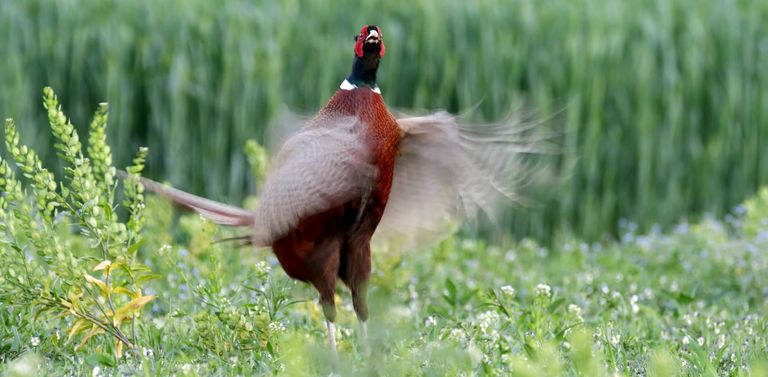

The female pheasant is much smaller than the male. Reaches a maximum of 50 cm in length. On the other hand, the male's body length can reach 90 cm.

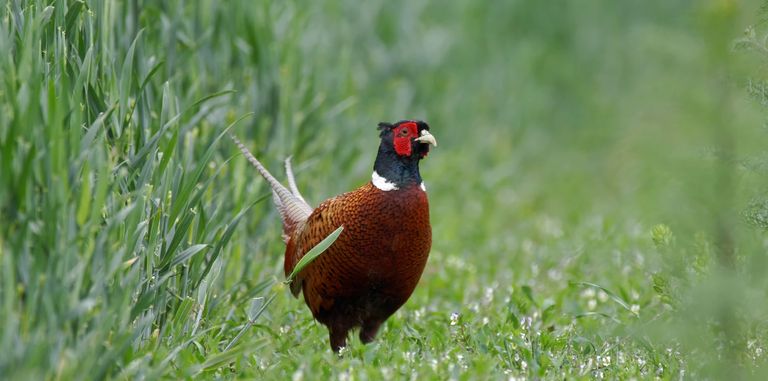
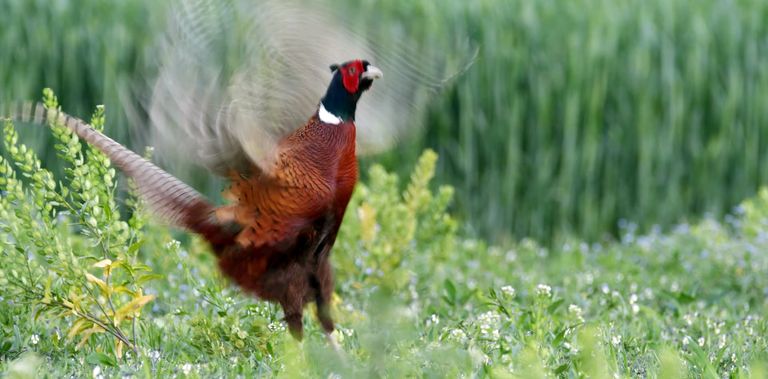

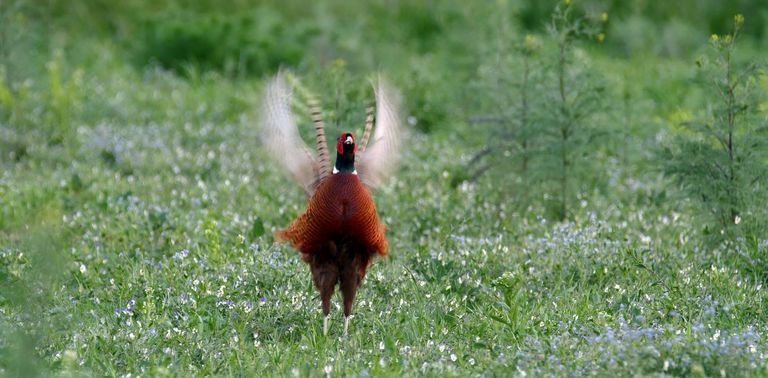
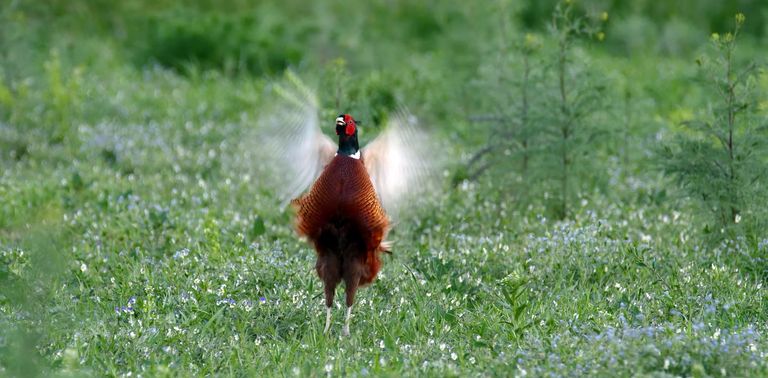
The male's great advantage is his long, striped tail, which is very often an ornament of hunting hats. In spring, red skin flakes appear on the sides of the pheasant's head. The female, on the other hand, is light brown in color, has a short tail and is rather inconspicuous.
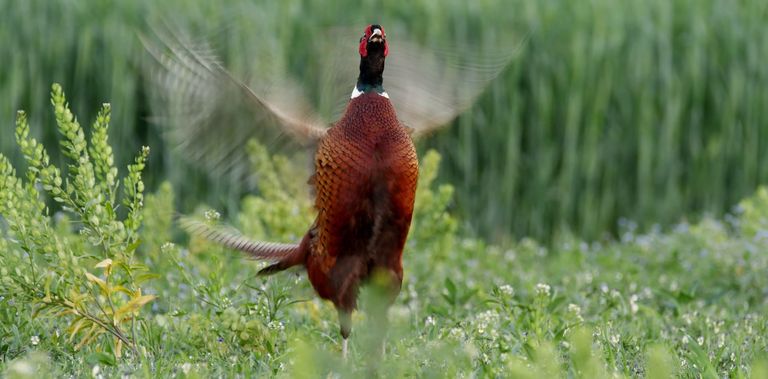
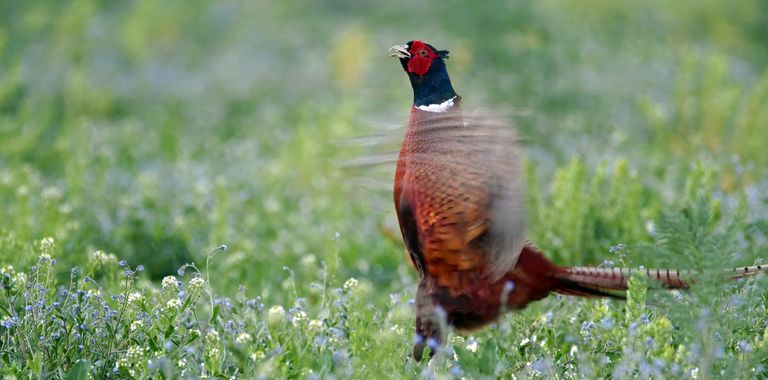
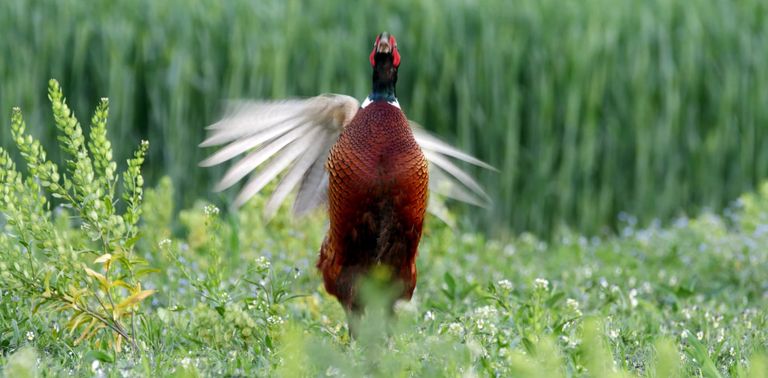
Pheasants prefer agricultural landscapes with bushes, thickets and trees. They lead mainly a sedentary lifestyle. There are 30 different subspecies of the common pheasant in the world, which only slightly differ from each other in some features.
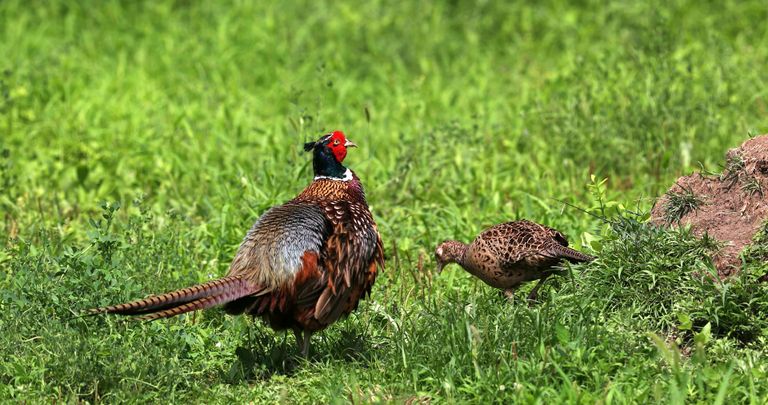
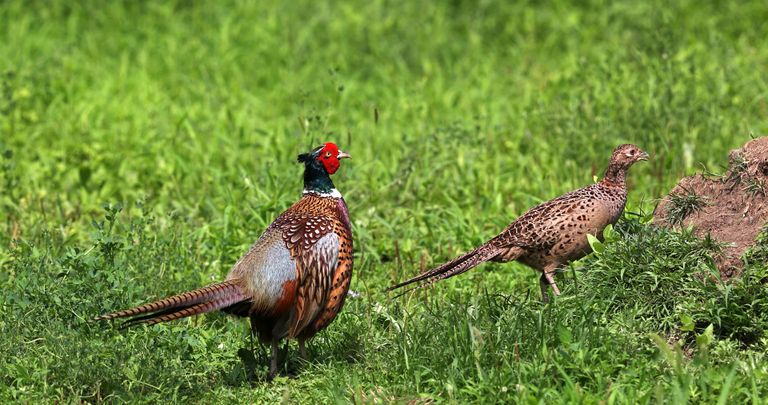
Pheasants have a very varied diet, they are basically omnivores. In the menu of these birds, we can find various seeds, small fruits, berries, roots or green parts of plants, and even small invertebrates.

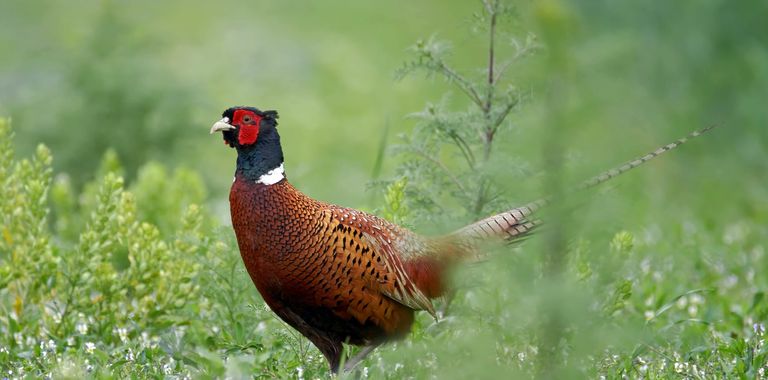

The nest of the common pheasant is built on the ground in clumps of grass or hidden next to bushes. Pheasants are quite prolific birds. Each time the female lays on average from 8 to 14 eggs. The eggs are quite small and have a greenish-gray color, sometimes even slightly blue. Male pheasants are polygamists, they live in configurations: one male for several or even several females.
